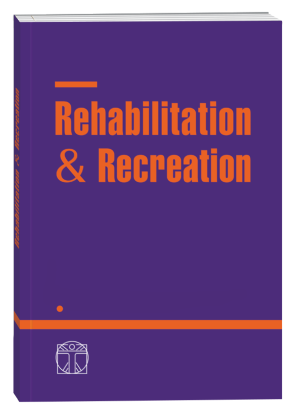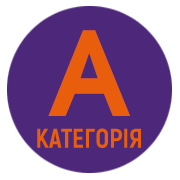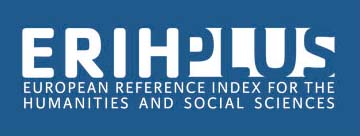RECREATION AND REHABILITATION CLUSTERS IN UKRAINE: BALANCED SPATIAL ORGANIZATION
DOI:
https://doi.org/10.32782/2522-1795.2024.18.4.11Keywords:
health tourism, recreation, tourist revitalization, sanatorium-resort complex, cluster, strategyAbstract
The purpose of the study is to substantiate a methodical approach to the clustering of health and rehabilitation tourism in Ukraine based on spatial modeling of the regional resource and material base. Research material: statistical data on the resource and material base of medical and health tourism; cartographic visualization of profile clusters, taking into account the possibilities of tourism revitalization. Methods: abstract-logical and systematic approach, method of structural and logical generalization, method of statistical grouping, graphic method. Results: on the basis of statistical analysis, it is proposed to divide the regions of Ukraine into the following groups: the first – Seaside region (23,2% of the area of Ukraine), specialization – family and children's recreational and health tourism; the second – the Volyn and Carpathian region (13,7%), specializing in sanatorium-resort and rehabilitation with an emphasis on inbound tourism; the third – the Capital and Dnipro-Slobozhansky region (20,4%), specializing in the organization of medical tourism; the fourth – region without a pronounced potential for health and rehabilitation tourism (26,1%); the fifth – region with significant, but insufficiently realized potential in the rehabilitation, medical and health sector (12,3%). The Autonomous Republic of Crimea (4.3% of the area of Ukraine) is separately highlighted as the sixth region, which will require a specific strategy of reintegration into the spatial system of organizing the recreation and rehabilitation economy of post-war Ukraine. Conclusions: to improve the management of rehabilitation, medical, and health tourism, a clustering tool is proposed, taking into account the possibilities of tourism revitalization of the relevant objects. The regions of Ukraine are divided into six groups according to the level of development of the resource and material base, each of which has a clear specialization and target group of tourists, as well as the direction of strategic development. The proposed clustering methodology makes it possible to more efficiently distribute resources between regions, focusing on their unique capabilities while concentrating efforts on the development of those areas where a certain region has the greatest potential. Clustering also allows better integration of tourism and medical infrastructure, increasing service provision and availability for socially vulnerable population groups.
References
1. Гапоненко Г., Євтушенко О., Шамара І. Сучасні тенденції та шляхи подальшого розвитку ринку медичного туризму в Україні. Вісник Харківського національного університету імені В.Н. Каразіна. Серія «Міжнародні відносини. Економіка. Країнознавство. Туризм». 2022. № 15. С. 81–92. https://doi.org/10.26565/2310-9513-2022-15-09
2. Державна служба статистики України. Кількість активних підприємств за регіонами України та видами економічної діяльності. 2023. URL: https://ukrstat.gov.ua/operativ/operativ2014/kap/kap_u/arh_kap_u.html
3. Державне агентство розвитку туризму України. URL: https://www.tourism.gov.ua/news-and-announcements
4. Інформаційно-аналітичні матеріали Міністерства захисту довкілля та природних ресурсів України з питання «Аналіз площ природно-заповідного фонду України в розрізі адміністративно-територіальних одиниць за 2020 рік». URL: https://wownature.in.ua/wp-content/uploads/2021/05/Dovidka-PZF-2020-V3.0-.pdf
5. Клочковська В.О. Кластерний підхід до забезпечення конкурентних переваг регіону. Інфраструктура ринку. 2018. № 17. С. 286–289. URL: http://market-infr.od.ua/journals/2018/17_2018_ukr/49.pdf
6. Мерилова І. Оптимізація промислових територій під рекреаційні цілі: методи, принципи та прийоми. Сучасні проблеми архітектури та містобудування. 2024. № 68. С. 135–148. https://doi.org/10.32347/2077-3455.2024.68.135-148
7. Офіційний сайт Українського науково-дослідного інституту медичної реабілітації та курортології Міністерства охорони здоров’я України. Санаторії та курорти України. URL: https://kurort.gov.ua/category/derzhavna-forma-vlasnosti/
8. Abdul-Rahman M.N., Hassan T.H., Abdou A.H., Abdelmoaty M.A., Saleh M.I., Salem A.E. Responding to tourists’ intentions to revisit medical destinations in the post-COVID-19 era through the promotion of their clinical trust and well-being. Sustainability. 2023. № 15(3) https://doi.org/10.3390/su15032399
9. Bezuhla L., Bieloborodova M., Bondarenko L., Herasymenko T. Recreation Areas Optimisation and Nature Exploitation in Urban Ecosystems. Kwartalnik naukowy Studia Regionalne i Lokalne. 2023. № 3(93) 2023. P. 55–68. https://doi.org/10.7366/1509499539304
10. Bieloborodova M., Voloshin V., Belopolsky N., Bessonova S., Bondarenko L. Testing the Environmental Kuznets Curve as an indicatorforecologicaltourismactivedevelopmentin Ukraine. Proceed. of XV International Scientific Conference «Monitoring of Geological Processes and Ecological Condition of the Environment», 17–19 Nov. 2021, Kyiv, Ukraine. https://doi.org/10.3997/2214-4609.20215K2010
11. Biswas T., Rai A. Analysis of spatial patterns and driving factors of domestic medical tourism demand in north East India. GeoJournal. 2023. № 88(3). P. 3163–3181. https://doi.org/10.1007/s10708-022-10798-y
12. Ford E.W. The rising tide of medical tourism: Opportunities and challenges for healthcare organizations. Journal of Healthcare Management / American College of Healthcare Executives. 2023. № 68(4). P. 215–218. https://doi.org/10.1097/JHM-D-23-00121
13. Ignatieva I., Serbenivska A., Orel A., Bieloborodova M., Bondarenko L. Innovative Approaches in the System of Regional Development Strategizing. Review of Economics and Finance. 2022. Vol. 20.2022. P. 605–611. https://doi.org/10.55365/1923.x2022.20.69
14. Majeed S., Gon Kim W. Emerging trends in wellness tourism: A scoping review. Journal of Hospitality and Tourism Insights. 2023. № 6(2). P. 853–873. https://doi.org/10.1108/JHTI-02-2022-0046
15. Pasieka S., Kolokolchykova I., Morozova O. Krushynska A., Krasnodied T., Popova T. The potential of tourist and recreational clusters in European space. Geojournal of Tourism and Geosites. 2021. № 39. P. 1488–1500. https://doi.org/10.30892/gtg.394spl20-793
16. Popa A.L., Ţarcă N.N., Sasu D.V., Bodog S.A., Roşca R.D., Tarcza T.M. Exploring Marketing Insights for Healthcare: Trends and Perspectives Based on Literature Investigation. Sustainability. 2022. № 14. https://doi.org/10.3390/su141710499
17. Roman Michał, Roman Monika, Wojcieszak-Zbierska M. Health Tourism – Subject of Scientific Research: A Literature Review and Cluster Analysis. International Journal of Environmental Research and Public Health. 2023. № 20 (1). https://doi.org/10.3390/ijerph20010480
18. Smiesova V., Pylypenko A., Ivanova M., Karpenko R. Economic and institutional conditions for implementation of economic interests in the countries of the world. Montenegrin Journal of Economics. 2019. № 15(4). P. 75–86. https://doi.org/10.14254/1800-5845/2019.15-4.6
19. World Tourism Organization and European Travel Commission. Exploring Health Tourism. UNWTO, Madrid. 2018. 184 p. https://doi.org/10.18111/9789284420209
20. Yong-Jin A.L., Jinwon K., Seongsoo J. Intertemporal Tourism Clusters and Community Resilience. The Professional Geographer. 2021. № 73(3). P. 567–572. https://doi.org/1080/00330124.2021.1871768
Downloads
Published
How to Cite
Issue
Section
License

This work is licensed under a Creative Commons Attribution-NonCommercial-NoDerivatives 4.0 International License.












